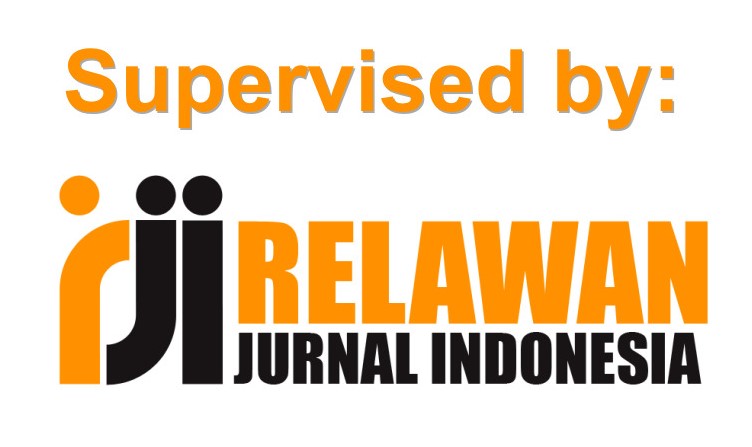PENERAPAN METODE K-MEANS CLUSTERING UNTUK PENGELOMPOKAN SISWA BERDASARKAN PRESTASI DI SD N 03 SANGGANG SUKOHARJO
Abstract
The rapid advancement of data science has made data processing a critical requirement across various fields, including education. Educational institutions are increasingly required to leverage available resources and information systems to enhance competitiveness and support strategic decision-making. Student achievement is generally assessed through both theoretical and practical subjects; however, determining achievement groups (very good, good, sufficient) often lacks efficiency, limiting early identification by homeroom teachers. This study applies the K-Means Clustering method to classify students' achievement levels at SD N Sanggang 03. The objective is to develop a system that assists teachers in grouping students based on performance categories—very good, good, and sufficient—thereby supporting data-driven decision-making in academic evaluation. The system was implemented using PHP and MySQL, with evaluation employing the Modified Partition Coefficient to measure clustering quality.
Keywords
Full Text:
PDFReferences
T. S. Sujana, R. Astuti, W. Prihartono, and R. Hamonangan, “Implementation of Data Mining Using the K-Means Algorithm to Group Students Based on Academic Performance,” Journal of Artificial Intelligence and Engineering Applications (JAIEA), vol. 4, no. 2, pp. 1527–1531, 2025.
S. Abdul Mukhsyi, A. I. Purnamaari, and A. Bahtiar, “Improving Student Achievement Clustering Model Using K-Means Algorithm in Pasundan Majalaya Vocational School,” Journal of Artificial Intelligence and Engineering Applications (JAIEA), vol. 4, no. 2, 2025.
A. P. Riani, A. Voutama, and T. Ridwan, “Penerapan K-Means Clustering Dalam Pengelompokan Hasil Belajar Peserta Didik Dengan Metode Elbow,” Journal of Information System Research (JOSH), vol. 6, no. 3, pp. 1705–1714, 2025.
Dewi A., N. Wulandari, Riski Annisa, Lestari Yusuf, and dan Titin Prihatin, “Educational Data Mining for Student Academic Prediction Using K-Means Clustering and Naïve Bayes Classifier,” Jurnal Pilar Nusa Mandiri, vol. 16, no. 2, pp. 155–160, 2020.
K. Setiawan and Y. Y. A. Saputry, “Clustering Data Calon Siswa Baru Menggunakan Metode K-Means di Pusat Pengembangan Anak Fajar Baru Cengkareng,” Jurnal JTIK, vol. 8, no. 1, pp. 75–83, 2024.
Mochamad H. and T. Utomo, “Clustering Data Siswa Putus Sekolah dengan Algoritma K-Means dan DBSCAN,” Jurnal Komputer dan Informatika, vol. 18, no. 2, 2023.
J. Han, M. Kamber, and J. Pei, Data Mining: Concepts and Techniques, 3rd ed. Waltham, MA, USA: Morgan Kaufmann, 2017.
U. Fayyad, G. Piatetsky-Shapiro, and P. Smyth, “From Data Mining to Knowledge Discovery in Databases,” AI Mag, vol. 17, no. 3, pp. 37–54, 2016.
R. Agrawal and R. Srikant, “Educational Data Mining: Techniques for Student Performance Evaluation,” International Journal of Data Science, vol. 5, no. 2, pp. 101–110, 2020.
A. K. Jain, “Data Clustering: 50 Years Beyond K-Means,” Pattern Recognit Lett, vol. 31, no. 8, pp. 651–666, 2019.
R. T. Vulandari, Data Mining: Teori dan Aplikasi Rapidminer. Yogyakarta: CV. Gava Media, 2017.
Y. Zhao and G. Karypis, “Criterion Functions for Document Clustering: Experiments and Analysis,” Machine Learning Journal, vol. 6, no. 4, pp. 311–331, 2021.
T. Hastie, R. Tibshirani, and J. Friedman, The Elements of Statistical Learning, 2nd ed. New York, NY, USA: Springer, 2021.
P. DuBois, MySQL, 5th ed. Indianapolis, IN, USA: Addison-Wesley, 2018.
A. F. Abdullah and N. A. Rahman, “Implementation of Web-Based Student Data Management System Using PHP and MySQL,” Journal of Information Technology and Computer Science, vol. 14, no. 1, pp. 35–42, 2022.
S. Modha and W. S. Spangler, “Clustering Validity Indices for High-Dimensional Data: An Empirical Study,” IEEE Trans Pattern Anal Mach Intell, vol. 27, no. 3, pp. 473–482, 2020.
DOI: http://dx.doi.org/10.30646/tikomsin.v13i2.1007
Refbacks
- There are currently no refbacks.
Editorial Office :
TIKomSiN : Jurnal Teknologi Informasi dan Komunikasi Sinar Nusantara
Published by STMIK Sinar Nusantara Surakarta
Address KH Samanhudi 84 - 86 Street, Laweyan Surakarta, Central Java, Indonesia
Postal Code: 57142, Phone & Fax: +62 271 716 500
Website: https://p3m.sinus.ac.id/jurnal/index.php/TIKomSiN
Email: tikomsin @ sinus.ac.id

This work is licensed under a Creative Commons Attribution-NonCommercial-ShareAlike 4.0 International License.










